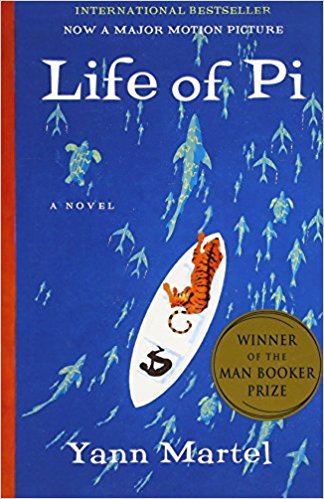- Sentinel High School
- English 2 Bookshelf
-
Heroes, Gods, and Monsters of Greek Mythology (September)
by Bernard Evsiln Year Published: 1966Retellings of the ancient Greek myths, arranged in four sections: the Gods, Nature Myths, Demigods, and Fables.
Study of flood myths, star myths, origin stories, fables, fairy tales, cryptids, and hero's journey
Lord of the Flies (October-November)
by William Golding Year Published: 1954OCTOBER
Lord of the Flies is a 1954 novel by the Nobel Prize-winning British author William Golding. The plot concerns a group of British boys who are stranded on an uninhabited island and their disastrous attempts to govern themselves. Themes include the tension between groupthink and individuality, between rational and emotional reactions, and between morality and immorality.

Life of Pi (December)
by Yann Martel Year Published: 2003NOVEMBER
We will read excerpts from Life of Pi
The son of a zookeeper, Pi Patel has an encyclopedic knowledge of animal behavior and a fervent love of stories. When Pi is sixteen, his family emigrates from India to North America aboard a Japanese cargo ship, along with their zoo animals bound for new homes.
The ship sinks. Pi finds himself alone in a lifeboat, his only companions a hyena, an orangutan, a wounded zebra, and Richard Parker, a 450-pound Bengal tiger. Soon the tiger has dispatched all but Pi, whose fear, knowledge, and cunning allow him to coexist with Richard Parker for 227 days while lost at sea. When they finally reach the coast of Mexico, Richard Parker flees to the jungle, never to be seen again. The Japanese authorities who interrogate Pi refuse to believe his story and press him to tell them "the truth." After hours of coercion, Pi tells a second story, a story much less fantastical, much more conventional--but is it more true?Literature Circles (February)
by Various Year Published: VariousFEBRUARY
Students will select which literature circle book they choose to read.
Possible Titles:
Firekeeper's Daughter - Angeline Boulley
The Hate U Give- Angie Thomas
Brown Girl Dreaming- Jacqueline Woodson
All American Boys- Jason Reynolds
Born a Crime- Trevor Noah
Dreamland Burning- Jennifer Latham
The Illustrated Man (April)
by Ray Bradbury Year Published: 1951JANUARY
We read excerpts from Illustrated Man
That The Illustrated Man has remained in print since being published in 1951 is fair testimony to the universal appeal of Ray Bradbury's work. Only his second collection (the first was Dark Carnival, later reworked into The October Country), it is a marvelous, if mostly dark, quilt of science fiction, fantasy, and horror. In an ingenious framework to open and close the book, Bradbury presents himself as a nameless narrator who meets the Illustrated Man--a wanderer whose entire body is a living canvas of exotic tattoos. What's even more remarkable, and increasingly disturbing, is that the illustrations are themselves magically alive, and each proceeds to unfold its own story, such as "The Veldt," wherein rowdy children take a game of virtual reality way over the edge. Or "Kaleidoscope," a heartbreaking portrait of stranded astronauts about to reenter our atmosphere--without the benefit of a spaceship. Or "Zero Hour," in which invading aliens have discovered a most logical ally--our own children. Even though most were written in the 1940s and 1950s, these 18 classic stories will be just as chillingly effective 50 years from now. --Stanley Wiater
Marrow Thieves (May)
by Cherie Dimaline Year Published: 2017In a futuristic world ravaged by global warming, people have lost the ability to dream, and the dreamlessness has led to widespread madness. The only people still able to dream are North America's Indigenous people, and it is their marrow that holds the cure for the rest of the world. But getting the marrow, and dreams, means death for the unwilling donors. Driven to flight, a fifteen-year-old and his companions struggle for survival, attempt to reunite with loved ones and take refuge from the "recruiters" who seek them out to bring them to the marrow-stealing "factories." (From GoodReads)

